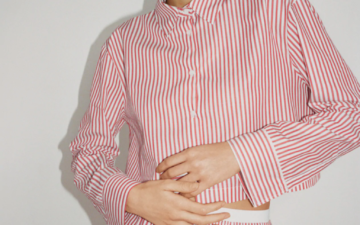Comme des Garcons is shit, how are you supposed to wear this “fashion”?
The fact that you called Comme des Garcons “shit” tells me that I’m probably not dealing with a rational person here. The runway isn’t meant to be a place to buy clothes. That’s what stores are for. The runway is where brands can affirm their image through exaggerated clothes, and where designers create that spectacle that makes buyers and retailers WANT to stock the clothes in the first place. This is how it generally works:
1) When designers start a new collection they start with the “commercial collection”, which is everything they intend to be selling. This includes skirts, jackets, capes, pants, etc. Several weeks before they show at fashion week, the designer works with a stylist to decide (or “edit”) which items they want to show on the runway. This is usually a small percentage of the commercial collection.
2) A lot of designers also create “press pieces” to affirm the image of their brand. These are the crazy things that nobody in real life could actually wear, and if they’re well-received they may be added to the commercial collection. Comme des Garcons s/s 2012, one of my favourite recent collections, was full of press pieces (e.g. the cage cape in look 11) that probably never made it to stores. If the press pieces are added to the commercial collection, the retailers can request to have them modified. This might mean lining a dress, raising the hem, whatever is required to make sure that the garment has a chance of selling.
3) So what do designers do with the press pieces or “shit” that nobody wears? Let’s use Alexander McQueen as an example. A lot of his dresses used materials that just couldn’t be used in real life, including fresh flowers, so a lot of his garments were only there to reaffirm the image of his brand. Rather than being stocked in stores, his clothes had heavy editorial presence in all the top magazines. He needed that to keep his image. Most of these more avant-garde brands, including Comme des Garcons, don’t make a lot of money from ready-to-wear anyway. They rely on accessories and fragrances for that.
Retailers can visit designers in their showrooms and pick out items that weren’t presented on the runway, which would explain why you sometimes see clothes in stores that you don’t recall seeing on the runway. Likewise, a retailer can have a garment altered and watered down so that “normal people” (read: conservative) will buy the clothes. That’s why clothes in stores are often less exciting than what they were on the runway. I hope this made sense!
Comme des Garçons è una merda, come si fa a indossare quella roba?
Già il fatto che tu chiami Comme “Merda” mi dice che probabilmente sto parlando con una persona non razionale.
La passerella non è un posto dove si comprano i vestiti. Ci sono i negozi per quello. La passerella è dove i brand possono affermare la loro immagine attraverso abiti esagerati, e dove i designer creano quello spettacolo che fa si che i buyers e i rivenditori VOGLIANO acquistare gli abiti, prima di tutto. Funziona così:
– Quando i designer cominciano una nuova collezione, partono dalla “collezione commerciale”, che è fatta da tutto quello che vogliono vendere. Dunque gonne, giacche, cappe, pantaloni, etc. Qualche settimana prima della sfilata alla settimana della moda, il designer lavora con una stylist per decidere quali capi vuole presentare in passerella. Di solito questa è una piccola percentuale della collezione commerciale
– Un sacco di designer creano anche una “collezione stampa”, per rendere più forte l’immagine del brand. Queste sono le cose pazze che nessuno potrebbe mai indossare nella vita di tutti i giorni, e se sono ben accolte potrebbero essere aggiunte alla collezione commerciale. Comme des Garcons s / s 2012, una delle mie collezioni preferite recenti, era piena di pezzi per la stampa (ad esempio la cappa gabbia nel look 11) che probabilmente non sono mai arrivati nei negozi. Se i pezzi di stampa vengono aggiunti alla collezione commerciale, i rivenditori possono chiedere di modificarli. Questo potrebbe significare foderare un vestito, sollevare l’orlo, tutto ciò che è necessario per fare in modo che il capo sia vendibile.
– Allora, cosa fanno i designer con i pezzi che nessuno indossa? Prendiamo Alexander McQueen come esempio. Molti dei suoi abiti sono fatti di materiali che proprio non possono essere utilizzati nella vita reale, compresi i fiori freschi, un sacco di suoi vestiti erano stati fatti solo per riaffermare l’immagine del suo marchio. Invece di essere immagazzinati nei negozi, i suoi vestiti avevano una pesante presenza editoriale in tutte le riviste migliori. Aveva bisogno di questo che per mantenere la sua immagine. La maggior parte di questi marchi d’avanguardia, tra cui Comme des Garcons, non ricavano un sacco di soldi dal ready-to-wear in ogni caso. Puntano su accessori e profumi, per questo.
– I rivenditori possono visitare i designer nei loro showroom e scegliere quello che non è apparso in passerella, il che spiegherebbe il perché a volte vedete nei negozi abiti che non avete mai visto durante il fashion show. Allo stesso modo, un rivenditore può far si che un abito venga alterato in modo che le “persone normali” (leggi: conservatori) lo comprino. Ecco perché i vestiti nei negozi sono spesso meno eccitanti di quello che erano in passerella. Spero che questo abbia un senso!
via Katemess
















Sherry Fraser
30/01/2013 alle 5:00 PMMi piacciono molto questi post da insider, grazie! Posso darti un suggerimento? Perché non carichi i singoli post in modo che ci sia la parte iniziale e poi, cliccando, il seguito? In questo modo potresti avere più post nella pagina iniziale, mentre ora sono così lunghi (apprezziamo moltissimo eh!) che ne restano solo un paio e gli altri “invecchiano” subito. Non so se mi sono spiegata e scusa il commento prolisso.